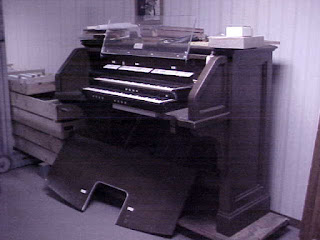Down the Rabbit Hole

I've been taking organ lessons for the last six months, and just loving it like crazy. The organ is an amazing instrument, I've loved the sound from childhood and I'm incredibly lucky to get to learn to play it. The most common roadblock is, of course, access to an organ. They are large and immovable. You pretty much have to go to them to practice, scheduling around your own life and the life of the organ, which is probably in a church and has other people practicing and rehearsing or using the sanctuary for something else and the organ is too loud sorry. I've been practicing around 6-7am which is wonderful way to start my day - quiet and meditative with stained glass and the scent of candles and old incense. That was summer. Now it is fall and winter is coming. It is dark in the early morning, and the nave isn't heated to habitable levels unless something is going on. I'm getting motivated to have a practice organ at home. Ok, people do install act






